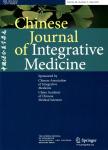Correlation Analysis of Rubella Incidence and Meteorological Variables Based on Chinese Medicine Theory of Yunqi
Correlation Analysis of Rubella Incidence and Meteorological Variables Based on Chinese Medicine Theory of Yunqi作者机构:Chinese Clinical Trial Registry(Hong Kong)Hong Kong Chinese Medicine Clinical Study CentreSchool of Chinese MedicineHong Kong Baptist UniversityKowloon TongHong Kong SARChina School of Traditional Chinese MedicineBeijing University of Chinese MedicineBeijing(100029)China
出 版 物:《Chinese Journal of Integrative Medicine》 (中国结合医学杂志(英文版))
年 卷 期:2019年第25卷第12期
页 面:911-916页
核心收录:
学科分类:1007[医学-药学(可授医学、理学学位)] 1005[医学-中医学] 1002[医学-临床医学] 100214[医学-肿瘤学] 10[医学]
基 金:Supported by the National Natural Science Foundation of China(No.81072896) Young Scientists Fund of the National Natural Science Foundation of China(No.81704198)
主 题:rubella meteorological factors Chinese medicine Yunqi theory pestilence occurring after 3 years
摘 要:Objective: To analyze the correlations between the incidence of rubella and meteorological factors over the same period and previous periods including 1, 2, 3 and 4 year ago(defined according to Chinese medicine Yunqi theory of pestilence occurring after 3 years) and establish the rubella-meteorological forecast models for Beijing area, China. Methods: Data regarding the incidence of rubella between 1990 and 2004 from Beijing Center for Disease Control and Prevention, and the meteorological variables including daily average temperatures, daily average wind speeds, average precipitations, average relative humidity, average vapor pressures and average low cloud covers between 1986 and 2004 were collected from the Beijing Meteorological Observatory. Descriptive statistics and back-propagation artificial neural network for forecast model’s establishment were adopted for data analysis. Results: The average temperature and relative humidity have a great contribution(100%) to the rubella morbidity. But the combination of other meteorological factors contributed to improve the accuracy of rubella-meteorological forecast models. The forecast accuracy could be improved by 76% through utilizing a combination of meteorological variables spanning from 3 years ago to the present rather than utilizing data from a single year or dating back to more earlier time than 3 years. Conclusions: There is a close relationship between the incidence of rubella and meteorological variables in current year and previous 3 years. This finding suggests that rubella prediction would benefit from consideration to previous climate changes.



